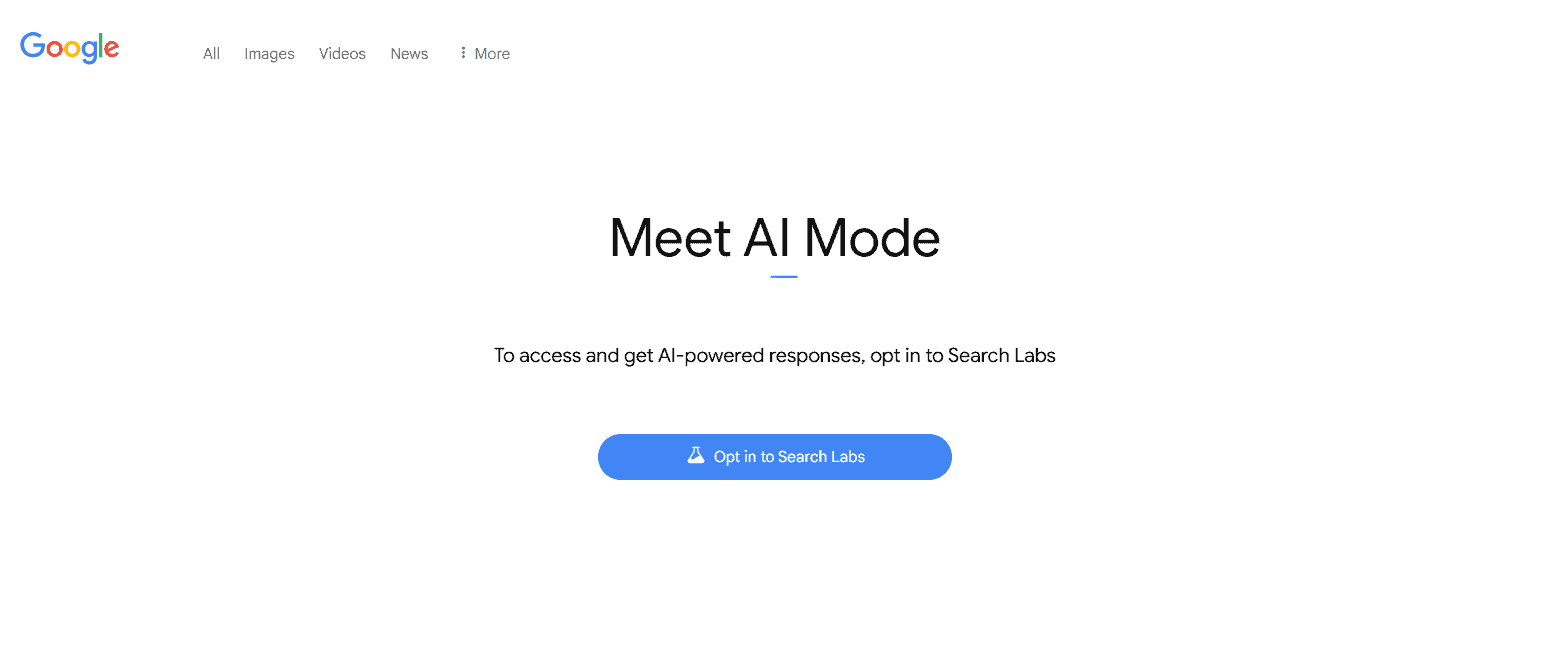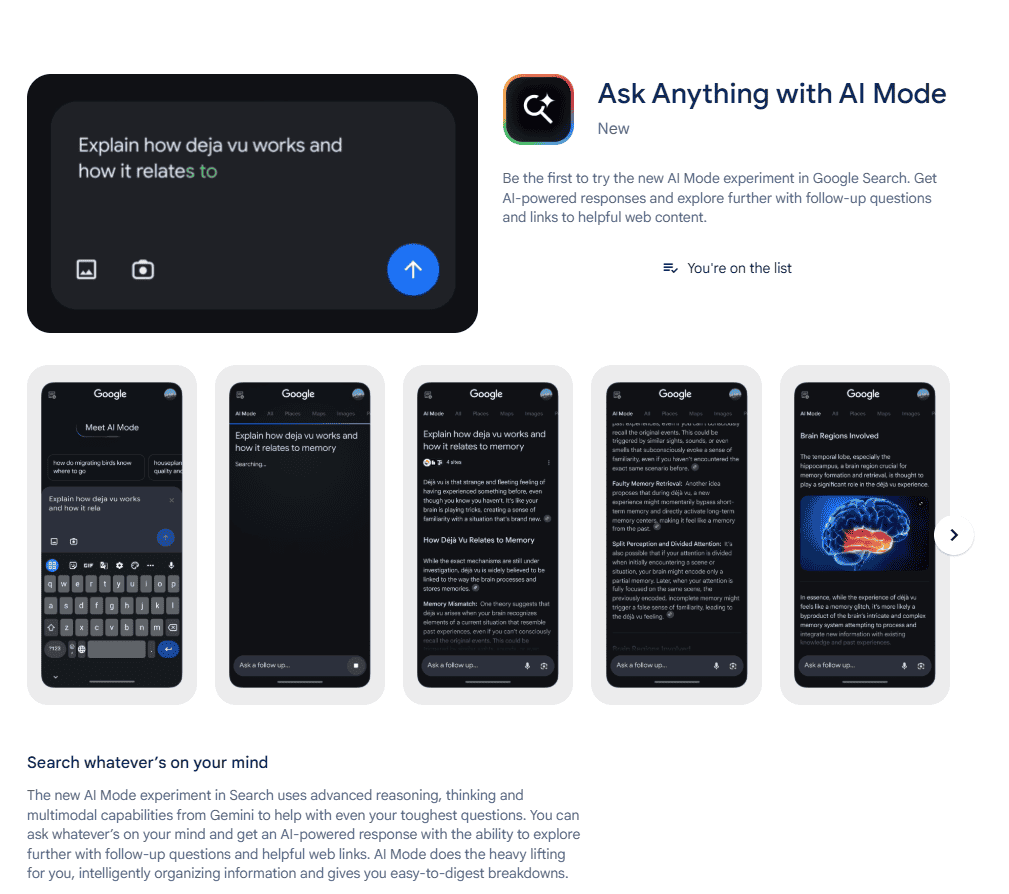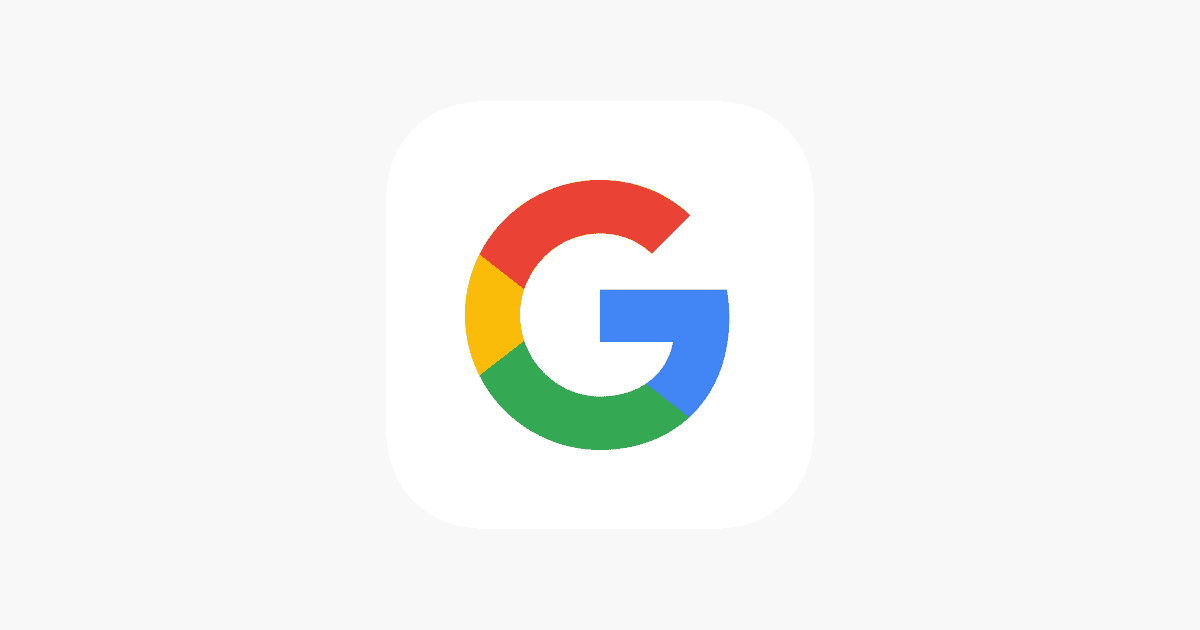So, Google’s just launched its new AI Mode, and honestly, it’s all about making web searches a whole lot quicker and (hopefully) more useful. If you want to check out Google’s AI Mode, just head over to google.com/aimode, or you can simply search on google.com and tap “AI Mode” right under the search bar. With this update, you’ll get answers powered by some pretty advanced tech and, in most cases, explanations that actually make sense—even for trickier topics.
AI Mode taps into the latest tools to break down your questions and serve up helpful responses in seconds. It works on both desktop and mobile, and, yep, it’s free for anyone who wants to give it a spin. Those super-fast answers can save you from wading through pages of links—something we could all use less of, right?

Steps To Access AI Mode On Google
To access Google’s new AI Mode, which is currently an experimental feature in Search Labs, follow these instructions:
Eligibility and Requirements:
- Age: You must be 18 years or older.
- Location: Currently, the experiment is available in English for users in the United States.
- Google Account: You need to be signed in to your Google Account. It’s recommended to use a personal Gmail account, as some features might be restricted on Google Workspace accounts (school or work). Ensure your birthday in your Google Account settings reflects that you are over 18.
- Google App or Chrome: You’ll need the latest version of the Google app or Chrome browser.
- Search History: Make sure Search History is enabled in your Google Account.
- Opt-in via Search Labs: You need to opt in to the “AI Overviews and more” or “Ask anything with AI Mode” experiment within Google Search Labs. If the experiment is full, you might need to join a waitlist and will be notified when it’s available to you.
Ways to Access AI Mode:
Once you meet the eligibility requirements and have opted into the experiment, you can access AI Mode in three ways:
- Go to the Direct Link: Open your browser and navigate to google.com/aimode.
- Through Google Search on the Web:
- Go to www.google.com and enter your search query in the search bar.
- Below the search bar, you should see an “AI Mode” tab or button. Tap on it.
- Through the Google App:
- Open the Google app on your Android or iOS device.
- On the home screen, below the search bar, you should find an “AI Mode” icon or button. Tap it.

Note that Ai Mode isn’t fully rolled out to all accounts so some users will have to join the waitlist to get access. When you do so it typically can take anywhere from 24-hours to 1 week for Google to enable your access.
Using AI Mode:
- Ask Questions: You can ask questions using text by typing in the “Ask AI Mode” bar at the bottom of the screen.
- Voice Search: Tap the microphone icon in the “Ask AI Mode” bar to ask your question using voice.
- Image Search (Google App only):
- In the search bar, tap the Google Lens icon.
- You can then upload an image or take a photo and ask questions related to it in the “Ask AI Mode” bar.
- Follow-up Questions: You can continue the conversation by asking follow-up questions in the same way you asked the initial question.
- Navigating Between Search Results and AI Mode: In the Google App, you can tap “All” at the top of the screen to switch between regular search results and the AI Mode interface.
Managing AI Mode:
- Turning On/Off: You can manage the “Ask anything with AI Mode” feature in Search Labs by going to
Labs Manageat the top of the Search Labs page and toggling it on or off. - Deleting AI Mode History:
- On your Android phone, go to AI Mode.
- At the top, tap “AI Mode History” to see your past searches.
- You can delete specific searches by tapping the “X” next to them or delete all history by tapping “Delete all.”
- Alternatively, you can manage your AI Mode activity through your general Google Search History page.
Providing Feedback:
Google encourages users to provide feedback to help improve AI Mode. At the bottom of each AI Mode response, you’ll find thumbs up and thumbs down icons to rate the response. You can also click “Share more feedback” for more detailed options.
Keep in mind that AI Mode is an experiment and its availability and features may change over time.
Key Takeaways
- Google’s AI Mode is straightforward to get started with—no rocket science here.
- It’s got you covered for all sorts of search questions, and the responses come back pretty quick.
- If you’re after simple, direct answers, this tool is definitely worth a try.
Understanding Google’s New Ai Mode
Google’s Ai Mode is basically a big step up for search, using smarter technology than before. It’s not just about links and facts anymore—it’s aiming for better answers, more logic, and new ways to interact with search altogether.
Overview of Ai Mode
Ai Mode sits right inside Google Search as a new feature. It’s powered by a custom version of Gemini 2.0, which is Google’s latest AI model, and it delivers answers that are richer and more detailed than the usual search results.
Instead of just a list of blue links, you’ll get AI-powered responses—and sometimes those answers include images or other data, not just text. That’s because Ai Mode can handle multimodal queries, so it understands both words and visuals at the same time.
One of the bigger changes is how it handles stuff that needs advanced reasoning. It can break down complicated instructions, explain steps, or even summarize info from different sources. The goal? Make it way easier (and faster) to find solid, accurate info—especially if your question’s a bit more involved.
Key Features and Capabilities
Ai Mode is here to tackle problems that regular search engines sometimes fumble. For instance, there’s advanced math support. You can throw a math problem at it and get a step-by-step breakdown, which is a lot more useful than just a calculator or a random forum post.
There’s also multimodal search—meaning you can upload a picture or ask a question about an image, not just type text. Ai Mode will analyze the photo and your words together, then give you a more complete answer. Like, you could point your phone at a plant and ask how to care for it, and Ai Mode will pull together info based on what it sees and what it knows.
Plus, it’s got advanced reasoning built in. It can compare options, summarize articles, and even suggest follow-up questions. Gemini 2.0 is designed to keep learning, so the more people use it, the sharper and more logical its answers get. If you want a deeper dive into all these features, there’s a good guide over at Google’s new AI Mode.
Supported Devices and Requirements
Ai Mode’s available on most devices, but it works best if you’ve got the latest software updates. You can use it on Android smartphones, computers, and tablets—just make sure your Google app or Chrome browser is up to date. Most features are supported on Android too, according to Google’s official support info.
To run Ai Mode, your device should have the newest Google app or an updated browser. A decent internet connection helps, since the AI needs to process stuff in real time. They’ll probably expand compatibility down the road, but right now, current Android and Chrome setups give you the smoothest ride.
There’s no charge to use Ai Mode. Anyone with Google Search on a supported device can check it out. Usually, you’ll find instructions for switching it on in Search Labs or within the Google app’s settings.
Step-by-Step Guide to Accessing Google’s Ai Mode
Getting started with Google’s Ai Mode means you’ll need early access through some special programs. It’s not just a switch you flip—you’ll join a testing group and then enable the mode on the main search site.
Joining Search Labs or Google Labs
Ai Mode is considered an experimental feature for now, so you’ll find it in Search Labs or Google Labs. These are basically Google’s playgrounds for testing new features before they go public. You’ll need a Google account to get in.
To sign up, head to the main Search Labs page or poke around in the Google app for a Labs section. Sometimes there’s a waitlist, so you might have to be a little patient.
If you’re accepted, you’ll spot a Labs icon (looks like a tiny beaker) on the Google homepage or in the app. Click it, and you can check out and turn on whatever experimental features are available—including Ai Mode. Access might depend on your country or device, so don’t be surprised if it’s not there yet for everyone.
Enabling Ai Mode in Google Search
Once you’re in the program, enabling Ai Mode in Google Search is pretty simple. On desktop, go to google.com and make sure you’re signed in. The Labs icon should show up at the top or under the search bar.
Click the icon, look for Ai Mode in the list, and switch it on. If you’re on your phone, just open the Google app and look for the Labs beaker or maybe a pop-up about experimental tools.
After you activate Ai Mode, you’ll probably get a quick setup message or a tip. Once it’s on, your search results page will start showing Ai-powered answers right alongside the usual stuff. The change is instant—no need to restart or anything.
Using the Ai Mode Tab and Button
With Ai Mode active, Google Search gets a new look: you’ll notice an Ai Mode tab under the search bar at google.com, right next to the regular options. Click it, and you’ll see the AI-powered results front and center.
In the Google app, there’s an Ai Mode button or icon below the search bar on the home screen. Switching between normal and AI searches is literally just a tap now. Type your question, hit the Ai Mode button or tab, and you’ll get those enhanced, AI-powered responses from Google’s latest systems.
If you want a more detailed walkthrough, or if you’re a visual learner, there’s a full guide you can check out—like this article on accessing Google Ai Mode.
How to Use Ai Mode for Different Query Types
Google’s AI Mode opens up some new ways to get fast, detailed answers—even for those tricky or unusual searches. You can dig into info with more context, have real conversations, and even use images as part of your search.
Handling Complex and Nuanced Questions
AI Mode is built to handle multi-layered questions that need deep reasoning. For example, you might ask how two historical events are similar and different, or compare medical symptoms side by side.
The system can break your question into pieces and pull together info for a clear, direct answer. It’s definitely a step up from regular search, which often just spits out a bunch of links.
If your question is a bit thorny—like an ethical dilemma or a detailed tech comparison—AI Mode’s advanced reasoning can give you a much more direct response.
Interacting With Follow-Up and Multimodal Queries
One thing that’s actually pretty handy: AI Mode lets you ask follow-up questions, so you can keep digging without having to start over. You can have a little back-and-forth and get more details as you go.
Now, with multimodal queries, you can toss in images too. Upload a photo—say, of a plant—and ask what it is. The AI blends what it sees in the image with your text to give you the right answer.
This is all powered by Gemini, Google’s AI model, which can understand scenes, objects, colors, and all sorts of visual details. It’s pretty useful for figuring out what something is, where you are, or even translating signs on the fly.
Shopping Data and Coding Use Cases
AI Mode makes online shopping easier by pulling together product data, reviews, and side-by-side comparisons. You can type in what you’re looking for—or even upload a picture—and get specs, trusted reviews, prices, and places to buy, all in one go.
For coding, it’s a real timesaver: you get step-by-step help with writing code, debugging, and explanations. Whether you’re learning a new language or stuck on a bug, it’ll offer code snippets and possible fixes.
Marketers and shoppers can use AI Mode features to track down the best products, while developers get help with both simple and tricky programming questions.
Comparing Google Ai Mode With Alternative Solutions
Google Ai Mode combines advanced features—like multimodal search and real-time data—by blending AI tech with the classic Google search engine. What makes it stand out? Deeper integration with things like the Knowledge Graph and Google Lens, plus AI-powered answers that aim to be fast and (hopefully) spot-on.
Gemini 2.0 vs ChatGPT and ChatGPT Search
With Gemini 2.0 in Google AI Mode, you get access to fresh, up-to-date info—and it’s not just about typing questions. You can actually upload images or other media, then ask about them directly. Honestly, that’s something basic versions of ChatGPT just don’t quite pull off yet.
Now, ChatGPT and ChatGPT Search rely on those massive language models trained on the web, sure, but their search integration isn’t as deep as Google’s. ChatGPT Search will use Bing or other sources and spit out AI-powered summaries, but you might run into trouble with really current events or anything visual—unless you’re paying for those premium upgrades.
If you’re a Google One AI Premium subscriber, you get some extra perks and priority access to Gemini 2.0, which helps keep things snappy and accurate. Curious about the details? Check out this overview of Google’s new AI Mode.
Benefits Over Traditional Search Engines
Google AI Mode changes up the search experience by giving you conversational, detailed answers instead of just tossing you a pile of links. It actually gets complex questions, can compare stuff for you, and helps break down tricky problems—all in the same search session. Not bad, right?
Here’s what stands out:
- AI-powered snapshots: Quick summaries with links, images, and useful context
- Multimodal queries: Ask with both text and images, not just words
- End-to-end assistance: Need a product comparison, an explanation, or even a step-by-step guide? It’s got you covered
Old-school search engines mostly depend on keywords and give you those endless lists of links, so you’re left digging for what you actually need. Google’s new approach tries to organize and condense the answers right up front. If you want more, there’s plenty at the Google Blog about AI Mode.
Role of Knowledge Graph and Google Lens
What really sets Google AI Mode apart is how it taps into the Knowledge Graph, which organizes info about people, places, and things. It’s supposed to give you sharper, more relevant answers—sometimes it’s almost eerie how well it connects the dots.
And then there’s Google Lens. Snap a photo or screenshot, toss it into your search, and the AI can spot objects, pull text, or answer questions about what’s in the image. That whole multimodal thing is a big leg up over search tools that only handle plain text.
Together, Knowledge Graph and Google Lens make Google AI Mode a pretty handy tool for visual learners, deep research, or just sorting out everyday puzzles. If you want to see what’s possible, check out the latest on image-based questions with Google AI Mode.
Frequently Asked Questions
Google’s AI mode works on both desktop and mobile, though the steps to turn it on or off do vary a bit depending on where you are. Usually, you need to be signed in to your Google account, and sometimes you’ll need the Google app.
What steps are required to activate the AI mode in Google search on a desktop browser?
On desktop, just open a browser and head to Google.com. Make sure you’re signed in (and not in Incognito mode). Type in your search, and look for the AI Mode tab right below the search bar. There’s more detail on this Google Help page for Search Labs.
How can I disable the Google AI mode on my Android device?
If you want to turn off AI mode on Android, open up the Google app and find the AI Mode option. Just tap the AI Mode button again to turn it off or exit the current session. That way, you’ll go back to standard search results instead of the AI summaries.
Where can I find the option to enable Google’s AI mode on a smartphone?
In the Google app, tap the search bar or jump to the Search tab. Then select AI Mode to turn on those advanced AI features. This works on both Android and iOS. There’s a helpful step-by-step guide to accessing Google AI Mode if you want more details.
What should I do to use Google’s AI functionalities on an iPhone?
On iPhone, just open the Google app and make sure you’re signed in. Tap the Search button and look for the AI Mode tab—that’s where you activate the features. You’ll need to be signed in with your Google account, of course.
Is there a specific section within Google Labs where I can access the AI mode features?
You can get to AI mode through Search Labs, either in your browser or the Google app. Inside Labs, look for the AI Mode option—it’s usually at the top of the browser or in its own tab. There’s a straightforward guide on the official Google support page about AI Mode in Search Labs if you need it.
Can you provide guidance on deactivating Google’s AI mode on mobile platforms?
If you want to turn off AI mode on your phone, just head back into the section or tab where you first switched it on. Usually, tapping it again will bring you right back to the good old regular search—no more AI-generated answers popping up. It’s a pretty quick way to get the usual search results instead of the AI responses.







